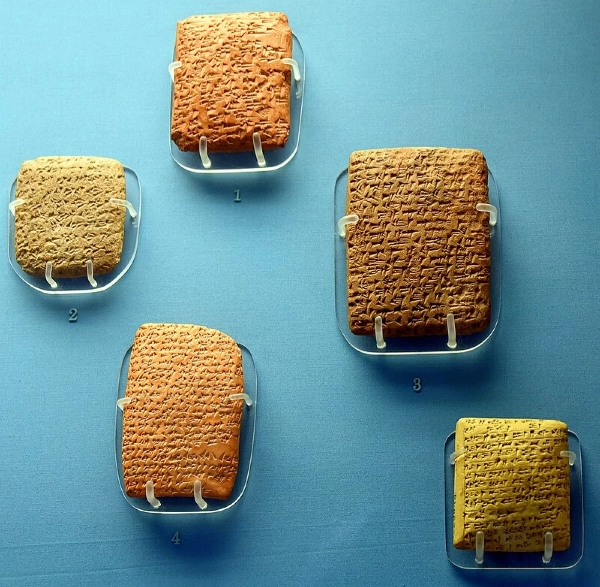Amman: EgyPulse – News Desk
The Amarna letters, a collection of 382 clay tablets discovered at Tell El Amarna, shed light on the political intrigue and trade networks of the Late Bronze Age. Written between 1360 and 1333 BC, they record official correspondence between the Egyptian Pharaoh and rulers of Canaanite city-states. The texts, composed in a West-Semitic dialect of Akkadian, functioned as a lingua franca. “The language can only be described as an entirely new code, only vaguely intelligible to the West Semitic because of the lexicon, and to the Babylonian because of the grammar,” said Eveline van der Steen, an independent Dutch researcher.
Although most surviving tablets are letters sent to Egypt, they provide a vivid picture of loyalty pledges, political rivalries and the precarious position of local rulers. Every city-state regent addressed the Pharaoh as their overlord, but many used the letters to demand troops against the Hapiru, often while accusing neighbouring rulers of collusion. Notorious figures in the correspondence include Lab’ayu of Shechem, his sons, and Milkilu of Gezer, accused of conspiring with enemies of Egypt. Abdi-Hepa of Jerusalem was branded “a second Lab’ayu” for allegedly seizing royal cities. Yet these rulers, in their own letters, pledged loyalty and accused others of slander. Some even blamed Egypt’s own commissioner, Ianhamu, of plotting against them.
The letters reveal fragile local authority. City-state rulers often fought not only each other but also their own people, many of whom sided with the Hapiru. “The general impression is that although legally subjected to Egypt, these city-states were largely left to their own devices and petty territorial fights,” van der Steen noted. One dramatic example is Rib-Addi of Byblos, who was abandoned by Egypt and forced into exile after his towns defected to the enemy state of Amurru. Founded by Abdi-Aširta and expanded by his son Aziru, Amurru grew into a powerful tribal kingdom stretching along the Lebanese coast.
Economic interests were also at stake. Trade caravans frequently appear in the correspondence. Letters from Burnaburiaš of Karaduniaš accuse Canaanite rulers, including those of Acco, of conspiring to rob his caravans. Another account describes the looting of 13 Egyptian merchants in Palestine. Caravan routes likely passed through Pella and Damascus, linking southern Arabia to the Mediterranean and Syria. Ransom and protection payments were common. Van der Steen noted that “the siege of a city could be paid off” and that Aziru of Amurru regularly took prisoners for ransom.
The letters also highlight the tribal character of Canaanite society. The term bitu (“house”) often meant “family” or “clan,” and loyalty was shaped by kinship ties. Lab’ayu’s son Mutba’lu ruled Pella, while Milkilu’s power was reinforced by his alliance with his father-in-law, Tagi. Egypt extracted tribute in the form of servants, slaves, cattle, weapons and timber. Occasionally, the Pharaoh summoned rulers to court in Egypt to explain themselves. This was deeply unpopular. “Perhaps partly because the regent never knew if and when he would return,” van der Steen said.
Many of these leaders, or their sons, were effectively held as hostages at the Egyptian court, ensuring loyalty and grooming them as future allies. “They were probably hostages, sons of kings and other leaders, taken to secure loyalty and train them as subjects once they succeeded their fathers,” van der Steen explained. For scholars, the Amarna letters remain one of the richest sources for understanding the interplay of politics, trade, and diplomacy in the ancient Near East.






